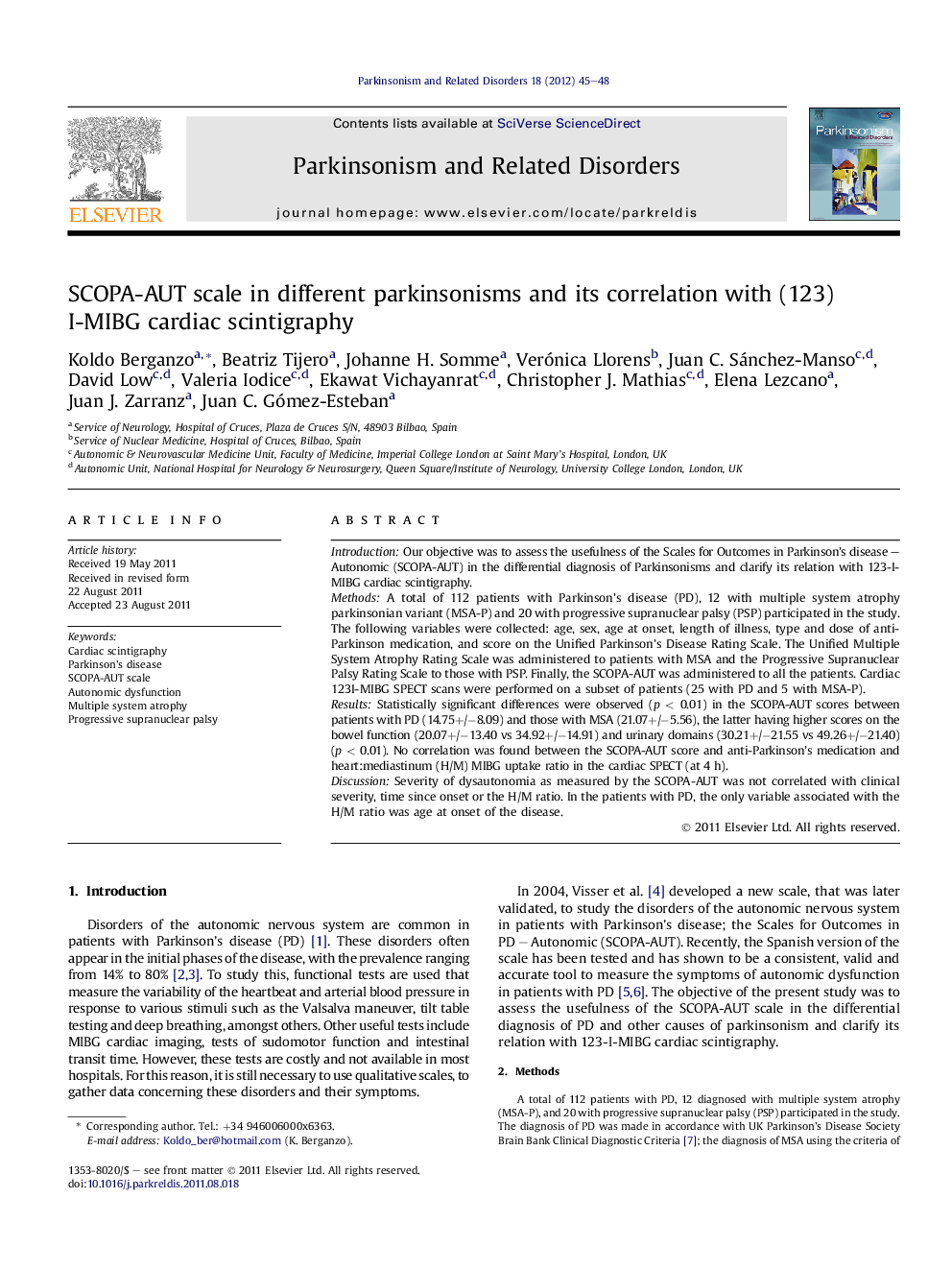| Article ID | Journal | Published Year | Pages | File Type |
|---|---|---|---|---|
| 1920662 | Parkinsonism & Related Disorders | 2012 | 4 Pages |
IntroductionOur objective was to assess the usefulness of the Scales for Outcomes in Parkinson’s disease – Autonomic (SCOPA-AUT) in the differential diagnosis of Parkinsonisms and clarify its relation with 123-I-MIBG cardiac scintigraphy.MethodsA total of 112 patients with Parkinson’s disease (PD), 12 with multiple system atrophy parkinsonian variant (MSA-P) and 20 with progressive supranuclear palsy (PSP) participated in the study. The following variables were collected: age, sex, age at onset, length of illness, type and dose of anti-Parkinson medication, and score on the Unified Parkinson’s Disease Rating Scale. The Unified Multiple System Atrophy Rating Scale was administered to patients with MSA and the Progressive Supranuclear Palsy Rating Scale to those with PSP. Finally, the SCOPA-AUT was administered to all the patients. Cardiac 123I-MIBG SPECT scans were performed on a subset of patients (25 with PD and 5 with MSA-P).ResultsStatistically significant differences were observed (p < 0.01) in the SCOPA-AUT scores between patients with PD (14.75+/−8.09) and those with MSA (21.07+/−5.56), the latter having higher scores on the bowel function (20.07+/−13.40 vs 34.92+/−14.91) and urinary domains (30.21+/−21.55 vs 49.26+/−21.40) (p < 0.01). No correlation was found between the SCOPA-AUT score and anti-Parkinson’s medication and heart:mediastinum (H/M) MIBG uptake ratio in the cardiac SPECT (at 4 h).DiscussionSeverity of dysautonomia as measured by the SCOPA-AUT was not correlated with clinical severity, time since onset or the H/M ratio. In the patients with PD, the only variable associated with the H/M ratio was age at onset of the disease.
